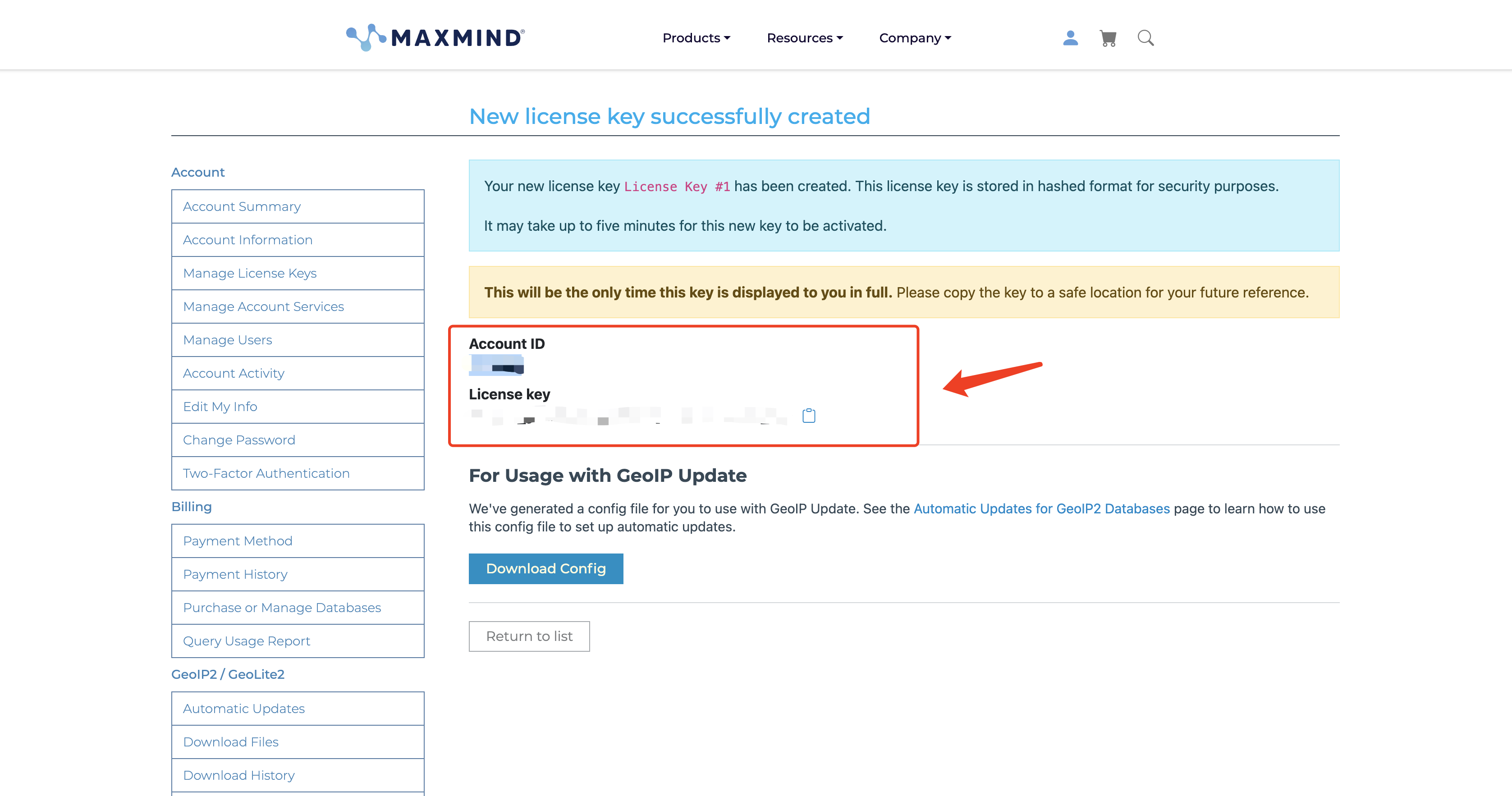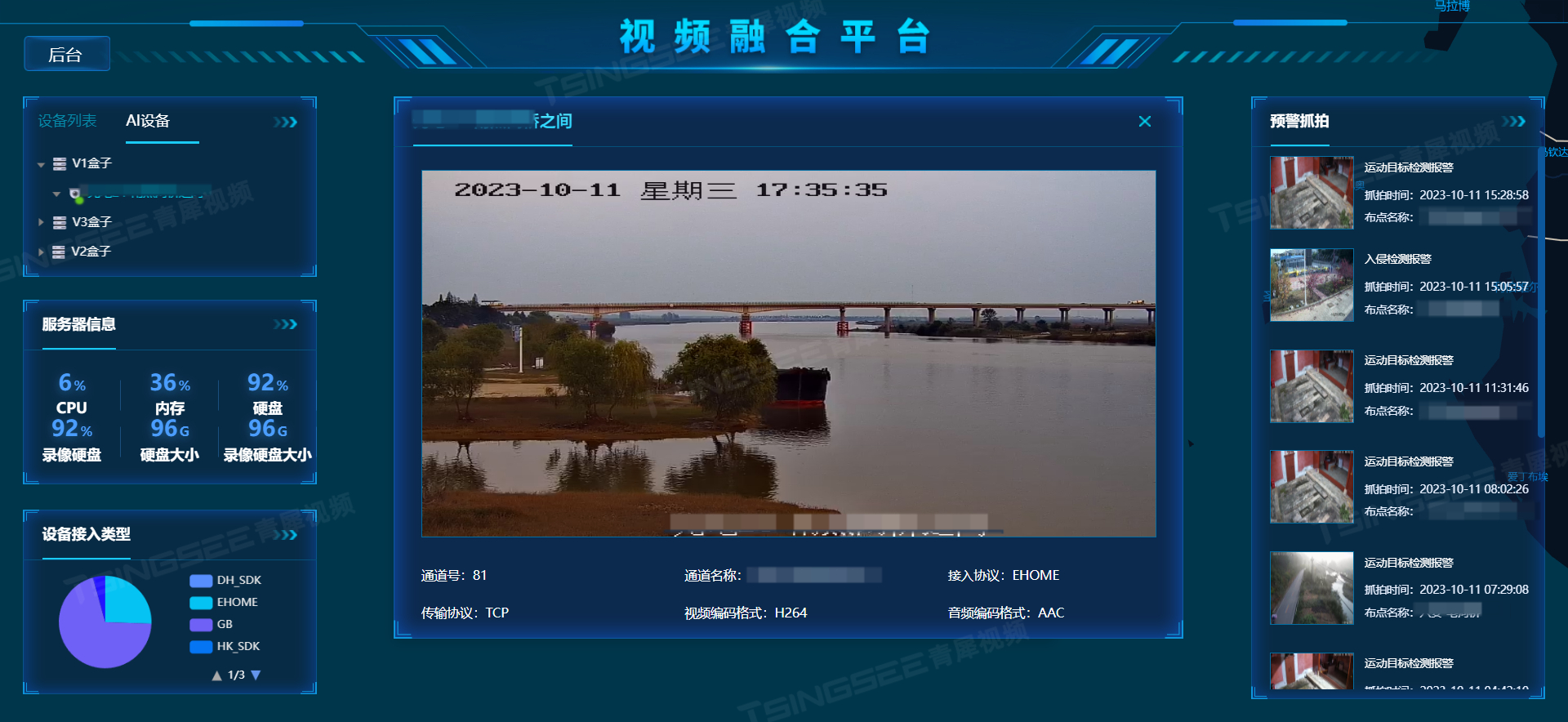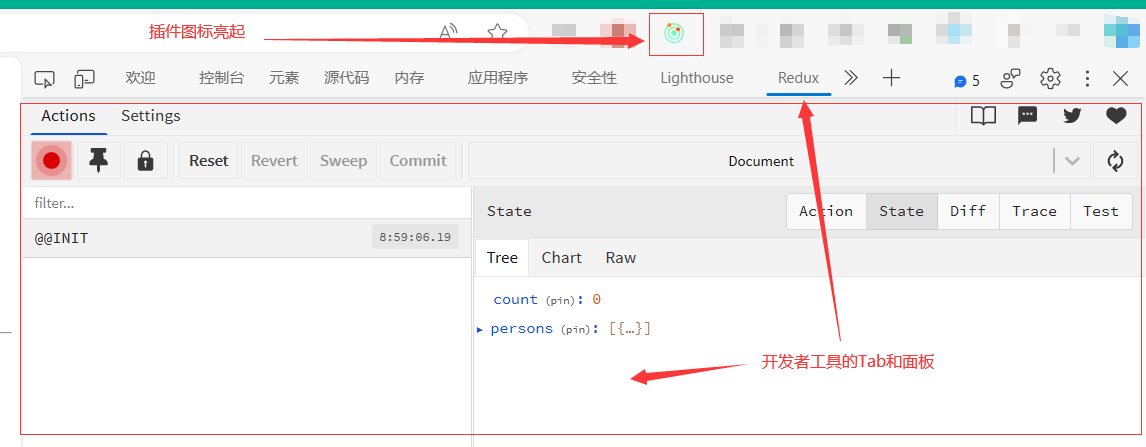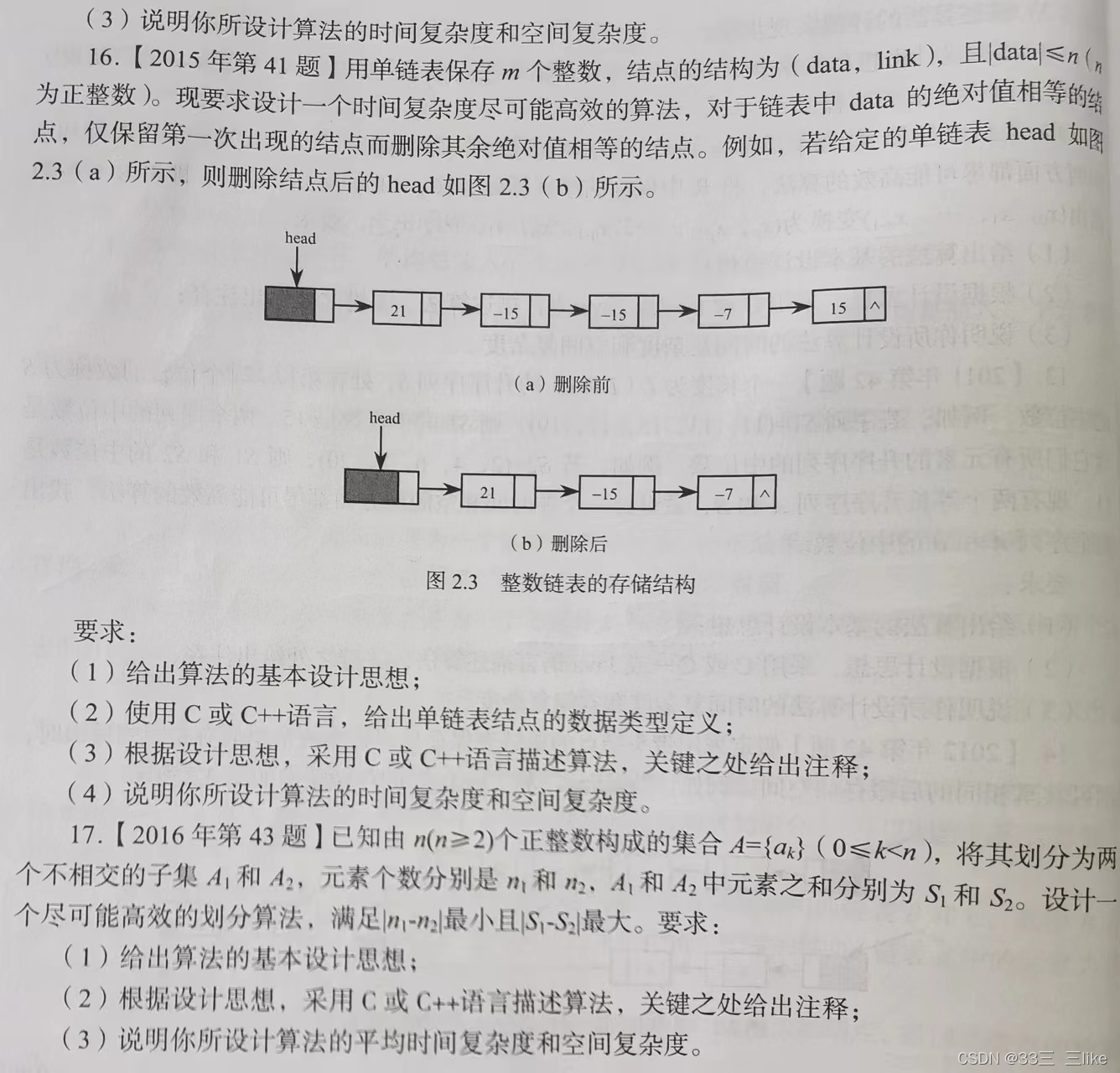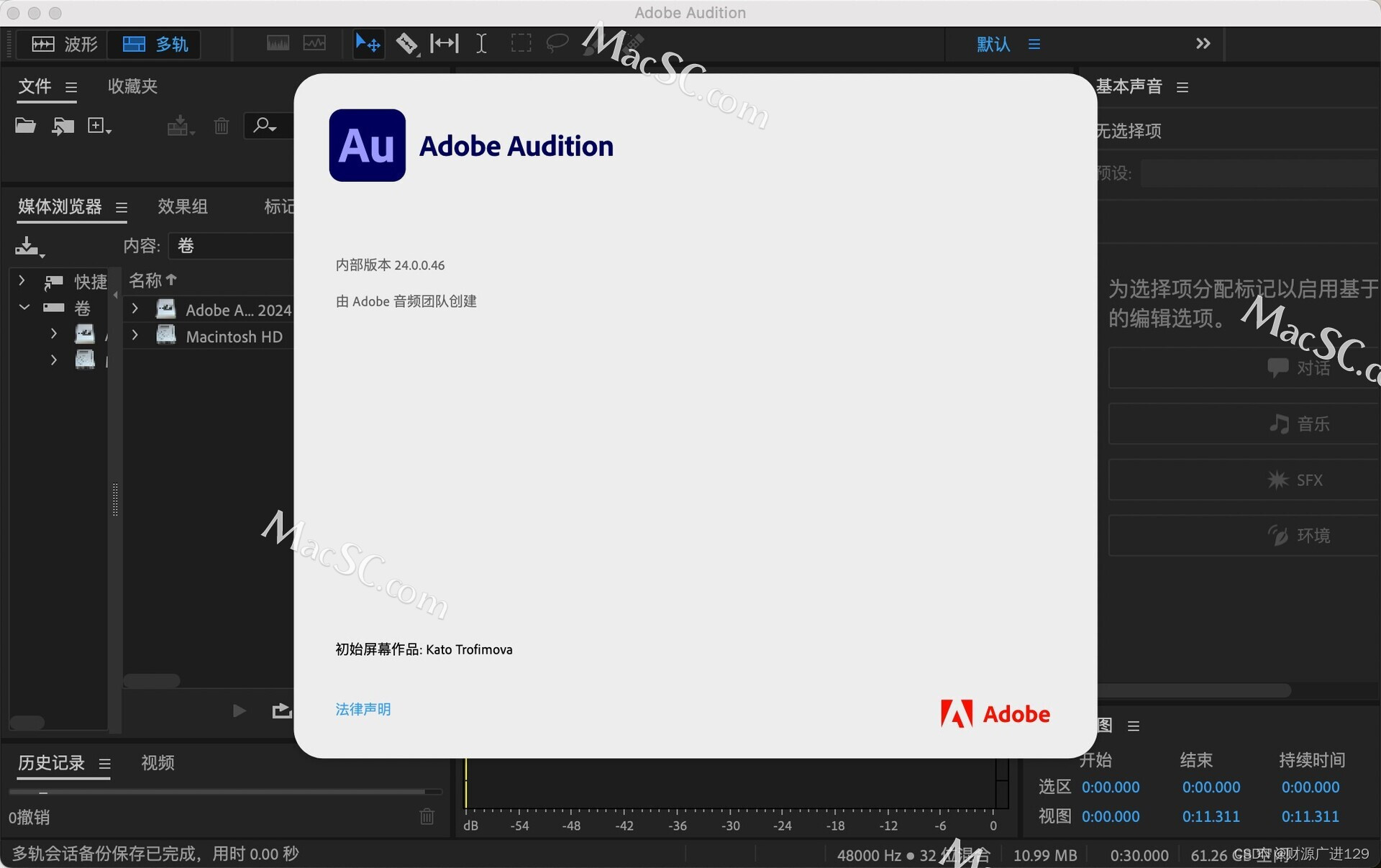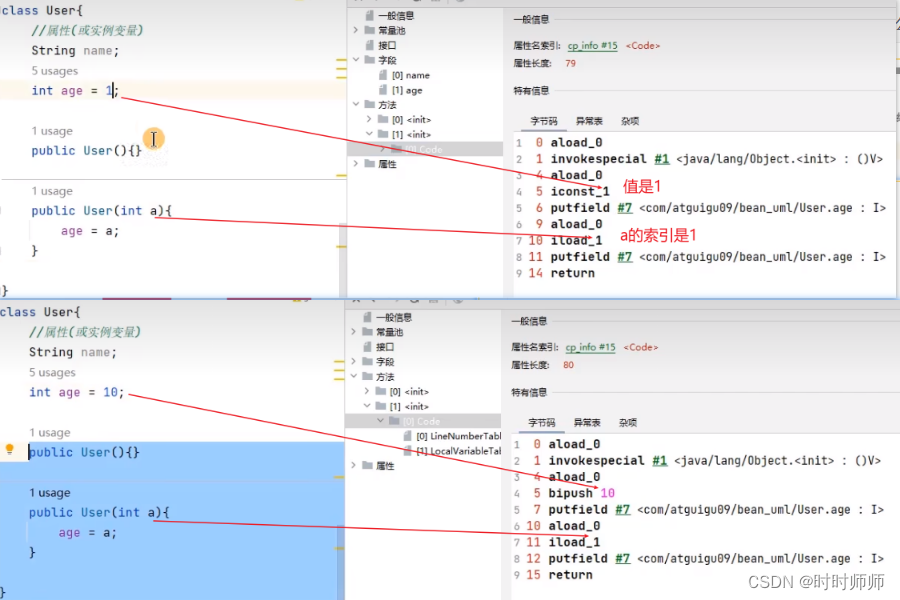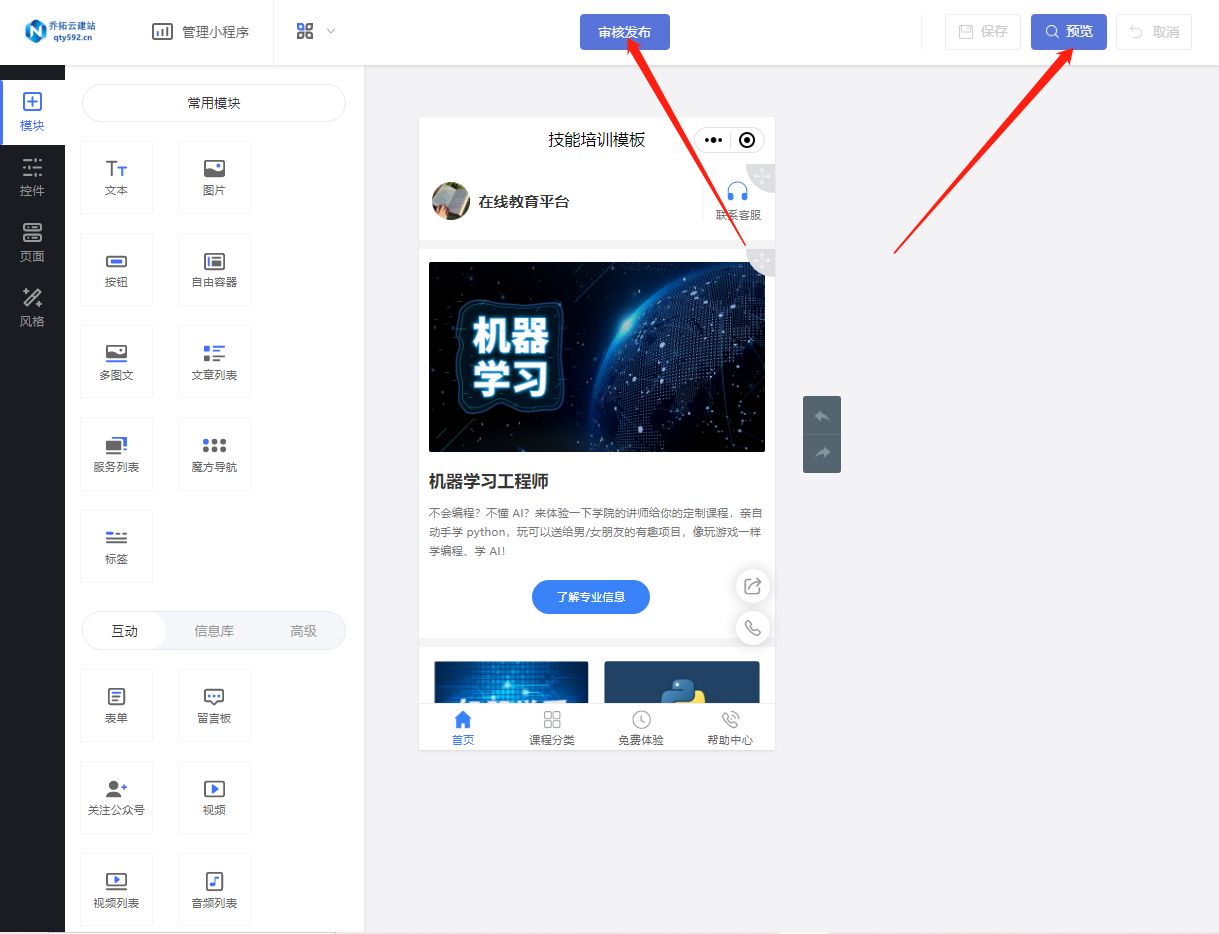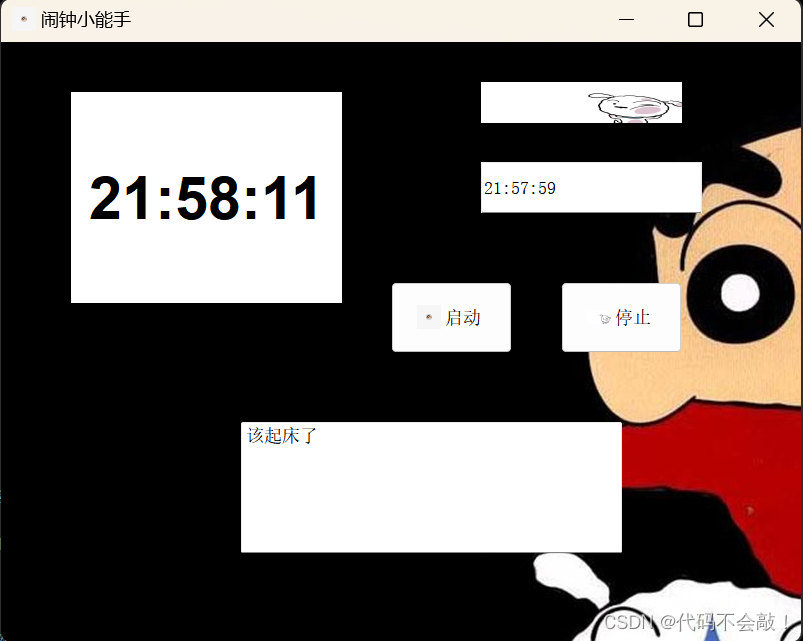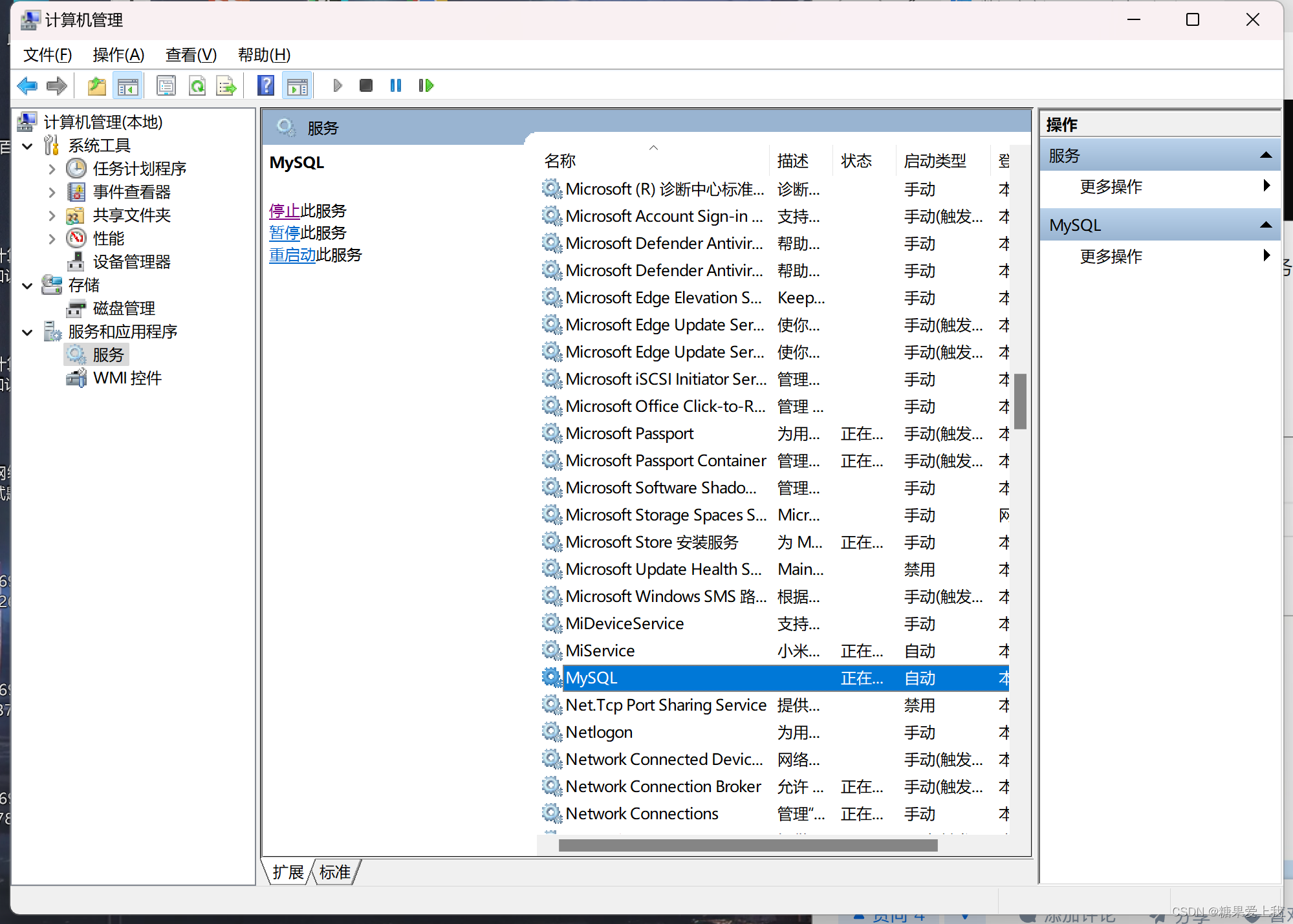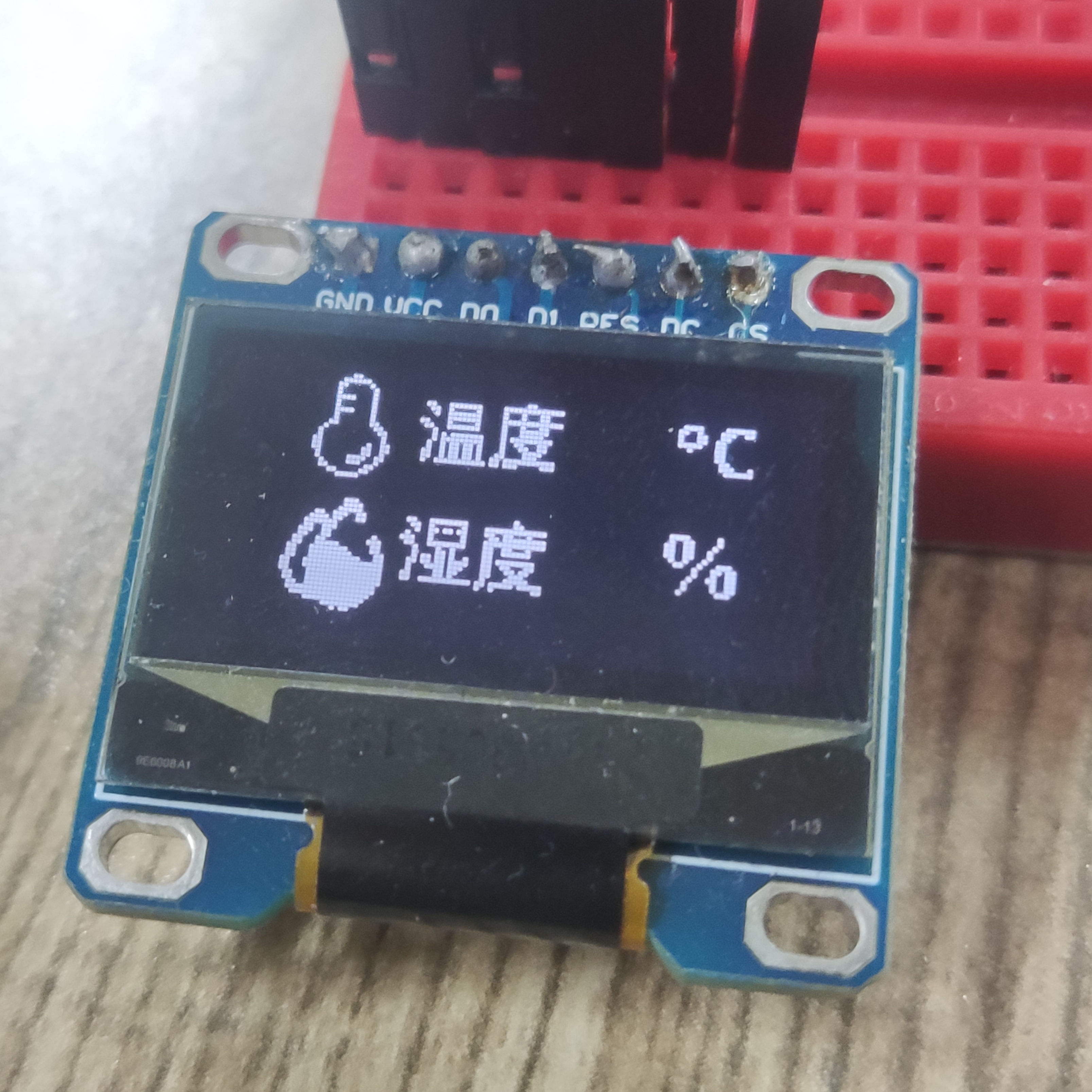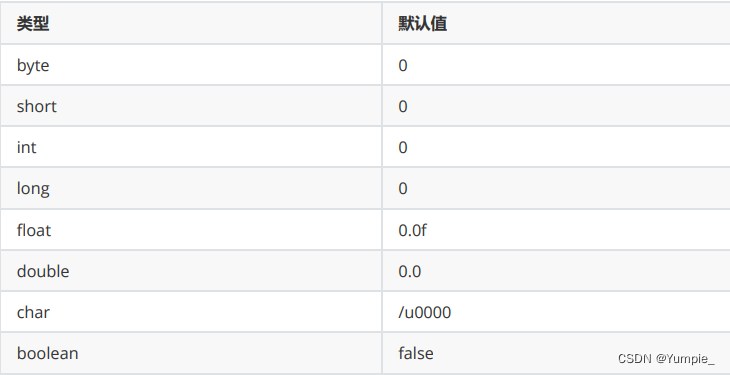Spring学习笔记(3)
- 一、Bean的注解式开发
- 1.1、注解开发的基本和@Component
- 1.2 注解式开发
- 8.3、@Component的三个衍生注解
- 二、Bean依赖注入注解开发
- 2.1、依赖注入相关注解
- 2.2、@Autowired扩展
- 三、非自定义Bean注解开发
- 四、Bean配置类的注解开发
- 五、Spring注解的解析原理
- 六、Spring注解式开发第三方框架
一、Bean的注解式开发
1.1、注解开发的基本和@Component
Spring除了xml配置文件进行配置之外,还可以使用注解方式进行配置,注解方式慢慢成为xml配置的替代方案。我们有了xml开发的经验,学习注解开发就方便了许多,注解开发更加快捷方便。
- Spring提供的注解有三个版本:
- 2.0时代,Spring开始出现注解
- 2.5时代,Spring的Bean配置可以使用注解完成
- 3.0时代,Spring其他配置也可以使用注解完成,我们进入全注解时代
基本Bean注解,主要是使用注解的方式替代原有xml的<bean>标签及其标签属性的配置
<bean id="" name="" class="" scope="" lazy-init="" init-method="" destroy-method=""abstract="" autowire="" factory-bean="" factory-method=""></bean>
使用@Component注解替代<bean>标签
| xml配置 | 注解 | 描述 |
|---|---|---|
<bean id="" class=""> | @Component | 被该注解表示的类,会在指定扫描范围内被Spring加载并实例化 |
//<bean id="userDao" class="com.Smulll.Dao.Impl.UserDaoImpl"></bean>
@Component("userDao")
public class UserDaoImpl implements UserDao{
@Override
public void show() {
}
}
<?xml version="1.0" encoding="UTF-8"?>
<beans xmlns="http://www.springframework.org/schema/beans"
xmlns:xsi="http://www.w3.org/2001/XMLSchema-instance"
xmlns:context="http://www.springframework.org/schema/context"
xsi:schemaLocation="http://www.springframework.org/schema/beans
http://www.springframework.org/schema/beans/spring-beans.xsd
http://www.springframework.org/schema/context
http://www.springframework.org/schema/context/spring-context.xsd">
<!--注解组件扫描-->
<!--扫描指定的基本包及其子包下的类,识别使用@Component注解-->
<context:component-scan base-package="com.huanglei"/>
</beans>
public class test1 {
@Test
public void ComponentTest(){
ClassPathXmlApplicationContext classPathXmlApplicationContext = new ClassPathXmlApplicationContext("beans.xml");
Object bean = classPathXmlApplicationContext.getBean("userDao");
System.out.println(bean);
}
}
1.2 注解式开发
如果@Component不设置name属性,那会回自动将首字母小写的类名转化成name,在访问的时候就用其首字母小写的类名进行访问
- 相关属性用注解开发替代的标签
| xml配置 | 注解 | 描述 |
|---|---|---|
<bean scope=""> | @Scope | 在类上或使用了@Bean标注的方法上,标注Bean的作用范围,取值为singleton或prototype |
<bean lazy-init=""> | @Lazy | 在类上或使用了@Bean标注的方法上,标注Bean是否延迟加载,取值为true和false |
<bean init-method=""> | @PostConstruct | 在方法上使用,标注Bean的实例化后执行的方法 |
<bean destroy-method=""> | @PreDestroy | 在方法上使用,标注Bean的销毁前执行方法 |
8.3、@Component的三个衍生注解
由于JavaEE开发是分层的,为了每层Bean标识的注解语义化更加明确,可以乱写,但是为了让注解语义化明确,建议按照标准书写
- @Component又衍生出如下三个注解:
| @Component衍生注解 | 描述 |
|---|---|
| @Repository | 在Dao层类上使用 |
| @Service | 在Service层类上使用 |
| @Controller | 在Web层类上使用 |
//service层
@Service("userService")
public class UserServiceImpl implements UserService{}
//dao层
@Repository("userDao")
public class UserDaoImpl implements UserDao{}
//web层
@Controller("userService")
public class UserController{}
二、Bean依赖注入注解开发
2.1、依赖注入相关注解
Bean依赖注入的注解,主要是使用注解的方式替代xml的标签完成属性的注入操作
<bean id=" "class="">
<property name="" value=""/>
<property name="" ref=""/>
</bean>
- Spring主要提供如下注解,用于在Bean内部进行属性注入的:
| 属性注入注解 | 描述 |
|---|---|
| @Value | 使用在字段或方法上,用于注入普通数据 |
| @Autowired | 使用在字段或方法上,用于根据类型(byType)注入引用数据 |
| @Qualifier | 使用在字段或方法上,结合@Autowired,根据名称注入 |
| @Resource | 使用在字段或方法上,根据类型或名称进行注入 |
- @Value一般会引用Spring容器里面的一些值,根据key进行获取
- @Autowired根据类型进行注入,如果同一类型的Bean有多个,尝试根据书写的名字进行二次匹配,如果匹配不成功则会报错
- 配合使用@Qualifier注解,可以在同一类型的多个Bean中根据名称注入相应的Bean
- @Resource不指定名称参数时,根据类型注入,指定名称则根据名称注入
@Service("userService")
public class UserServiceImpl implements UserService{
@Value("zhangsan")
private String username;
//@Autowired,如果同一类型的Bean有多个,尝试根据名字进行二次匹配,如果匹配不成功则会报错
//@Qualifier("userDao2"),配合使用@Autowired注解,可以在同一类型的多个Bean中根据名称注入相应的Bean
@Resource
private UserDao userDao;
@Override
public void show() {
System.out.println(username);
System.out.println(userDao);
}
}
2.2、@Autowired扩展
@Autowired使用该注解时,所查看的是参数的类型,跟方法的名称无关
@Service("userService")
public class UserServiceImpl implements UserService{
@Autowired
public void xxx(UserDao userDao) {
System.out.println("xxx:"+userDao);
}
}
该注解同样可以获取一个集合,可以将同一类型的多个Bean打印出来
@Service("userService")
public class UserServiceImpl implements UserService{
@Autowired
public void yyy(List<UserDao> userDaoList) {
System.out.println("yyy:"+userDaoList);
}
}
三、非自定义Bean注解开发
非自定义Bean不能像自定义Bean一样使用@Component进行管理,非自定义Bean要通过工厂的方式进行实例化,使用@Bean标注方法即可,@Bean的属性为beanName,如不指定为当前工厂方法名称
//将方法返回值Bean实例以@Bean注解指定的名称存储到spring容器中
@Bean ("datasource")
public DataSource dataSource (){
DruidDataSource dataSource = new DruidDataSource();
dataSource.setDriverClassName("com.mysql.jdbc.Driver");
dataSource.setUrl("jdbc:mysql://localhost:3306/itheima");
dataSource.setUsername("root");
dataSource.setPassword("123456");
return dataSource;
}
@Bean标注后面不加name值,则将类名赋值为name属性值
- 在参数中注入
@Component
public class otherBean {
@Bean("dataSource")
public DataSource dataSource(
@Value("${jdbc.driver}") String driver
@Qualifier("userDao") UserDao UserDao//不需要写@Autowired
){
DruidDataSource dataSource = new DruidDataSource();
dataSource.setDriverClassName(driver);
dataSource.setUrl("jdbc:mysql://localhost:3306/mybatis");
dataSource.setUsername("root");
dataSource.setPassword("123456");
return dataSource;
}
}
四、Bean配置类的注解开发
@component --> <bean>
@Configuration --> 表示上面配置的文件
下面是其他的标签注解开发展示:
<!--扫描Spring管理的包-->
<context:component-scan base-package="com.huanglei"/>
<!--加载properties文件--->
<context:properties-placeholder location="classpath:jdbc.properties"/>
<!--引入其他的xml文件-->
<import resource="classpath:beans.xml"/>
在用注解式开发的时候需要在配置类上加 @Configuration
作用:
- 表明这是一个配置类
- 使其就具备@Component的功能
| xml配置 | 注解 | 描述 |
|---|---|---|
<context:component-scan base-package="com.huanglei"/> | @ComponentScan | 组件扫描配置 |
<context:property-placeholder location="classpath:jdbc.properties"/> | @PropertySource | 获取到properties文件里的信息 |
<import resource="classpath:beans.xml"> | @Import | 导入其他的xml配置文件 |
base-package的配置方法:
- 可以配置一个或者多个包:扫描的为该包及其子包下使用注解的类
- 不配置包名:扫描当前@componentScan注解配置类所在包及其子包下的类
@Component
@Configuration
@ComponentScan(backages={"com.huanglei","com.itheima"})
@PropertySource({"classpath:jdbc.properties"})
//<import resource=""/>
@Import(otherBean.class)
public class SpringConfig {}
其他的注解式开发:
@Primary 这个是来调节同类型Bean优先顺序的,就是说在利用ByTybe调用bean对象的时候有多个对象,如果没有@primary,那么就按照之前的调用规则进行调用,如果存在@Primary那么就有限调用这个Bean对象
@Repository("userDao")
public class UserDaoImpl implements UserDao{}
@Repository("userDao2")
@Primary
public class UserDaoImpl2 implements UserDao{}
@Bean("dataSource")
public DataSource dataSource(){}
@Bean("dataSource2")
@Primary //如果没添加这个,那么在调用的时候,就会按照名字调用上面那个Bean对象
public DataSource dataSource2(){}
扩展:@Profile注解的作用同于xml配置时学习profile属性,是进行环境切换使用的
<beans profile="test">
注解@Profile标注在类或方法上,标注当前产生的Bean从属于哪个环境,只有激活了当前环境,被标注的Bean才能被注册到Spring容器里,不指定环境的Bean,任何环境下都能注册到Spring容器里
@Repository("userDao")
@Profile("test") //表面实在test环境下面
public class UserDaoImpl implements UserDao{}
@Repository("userDao2")
public class UserDaoImpl2 implements UserDao{}
- 可以使用以下两种方式指定被激活的环境:
- 使用命令行动态参数,虚拟机参数位置加载
-Dspring.profiles.active=test - 使用代码的方式设置环境白能量
System.setProperty("profiles.active","test");
- 使用命令行动态参数,虚拟机参数位置加载
@Test
public void test2(){
System.setProperty("spring.profiles.active","test");
AnnotationConfigApplicationContext annotationConfigApplicationContext = new AnnotationConfigApplicationContext(SpringConfig.class);
Object userDao = annotationConfigApplicationContext.getBean("userDao");
System.out.println(userDao);
}
五、Spring注解的解析原理
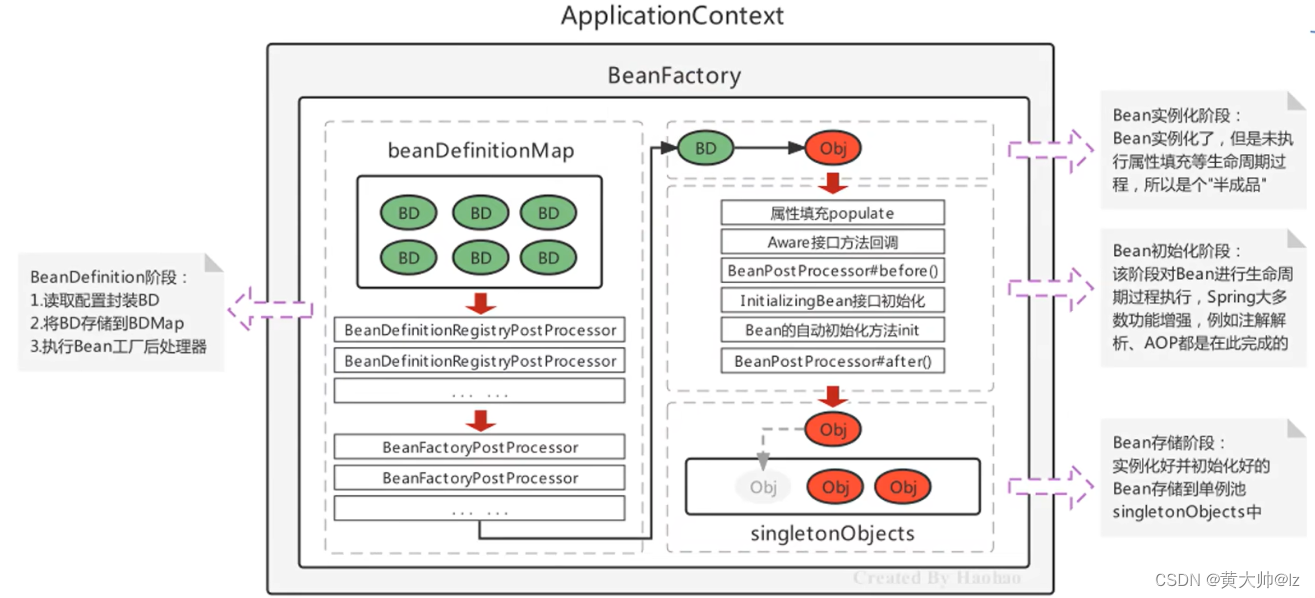
结论:只要将Bean对应的BeanDefinition注册到beanDefinitionMap中,就可以经历整个SpringBean的生命周期,最终实例化进入单例池中
使用@Component等注解配置完毕后,要配置组件扫描才能使注解生效
六、Spring注解式开发第三方框架
<bean id="dataSource" class="com.alibaba.druid.pool.DruidDataSource">
<property name="driverClassName" value="com.mysql.cj.jdbc.Driver"></property>
<property name="url" value="jdbc:mysql://localhost:3306/mybatis2"></property>
<property name="username" value="root"></property>
<property name="password" value="123456"></property>
</bean>
<!--配置SqlSessionFactoryBean,作用将SqlSessionFactory存储到spring容器-->
<bean class="org.mybatis.spring.SqlSessionFactoryBean">
<property name="dataSource" ref="dataSource"></property>
</bean>
<!--MapperScannerConfigurer,作用扫描指定的包,产生Mapper对象存储到Spring容器-->
<bean class="org.mybatis.spring.mapper.MapperScannerConfigurer">
<property name="basePackage" value="com.Smulll.mapper"></property>
</bean>
使用注解方式:
注解方式,Spring整合MyBatis的原理,关键在于**@MapperScan**,@MapperScan不是Spring提供的注解,是MyBatis为了整合Spring,在整合包org.mybatis.spring.annotation中提供的注解,源码如下:
package com.huanglei.listener;
import org.springframework.context.ApplicationContext;
import org.springframework.context.support.ClassPathXmlApplicationContext;
import org.w3c.dom.css.CSSPrimitiveValue;
import javax.servlet.ServletContext;
import javax.servlet.ServletContextEvent;
import javax.servlet.ServletContextListener;
public class ContextLoaderListener implements ServletContextListener {
private String CONTEXT_LOCATION = "configLocation";
@Override
public void contextInitialized(ServletContextEvent sec) {
//获取到全局变量configLocation
ServletContext servletContext = sec.getServletContext();
String contextLocation = servletContext.getInitParameter(CONTEXT_LOCATION);
contextLocation = contextLocation.substring("classpath:".length());
//首先创建Spring容器
ApplicationContext applicationContext = new ClassPathXmlApplicationContext(contextLocation);
//将Spring容器放到ServletContext域当中
servletContext.setAttribute("applicationContext",applicationContext);
}
@Override
public void contextDestroyed(ServletContextEvent servletContextEvent) {
}
}
重点关注一下@lmport({MapperScannerRegistrar.class),当@MapperScan被扫描加载时,会解析@Import注解,从而加载指定的类,此处就是加载了MapperScannerRegistrar
